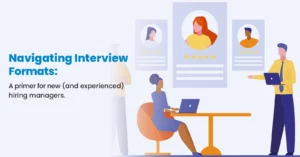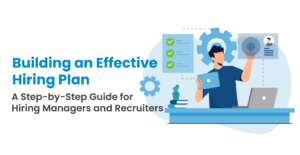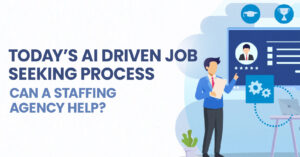When beginning contract negotiation discussions, your organization needs to enter the conversation prepared with knowledge and best practices that ensure a fair, market-based contract rate that’s mutually beneficial to both parties.
In today’s candidate driven market, negotiating pay rates with your organization’s contracted resources can be one of the most daunting aspects of your hiring program, but it’s also one of the most important.
Below is an easy-to-follow, actionable plan that will align your directly sourced workforce with your cost saving objectives.
Leverage your hiring data
Use your hiring data to establish benchmarks on what you pay for specific roles. If you already have a rate card, even better. Use it and compare it against your hiring results, paying particular attention to the use of “niche” or “other” worker types. If you are using these types of workers, dig in to find out why. This usually means that someone is working around rate compliance, you need to add a new category or you should review your existing rate card to current market conditions.
Approaching the bargaining table prepared with a framework for dialogue will improve the chances of achieving mutually beneficial relationships with your contingent workforce.
Consider flexibility to be on par with compensation
In the midst of the Great Resignation or the Great Reshuffle, engaging and retaining talent is incredibly difficult – especially if individuals have competing offers. Flexible work options such as remote and hybrid work models have accelerated to major selection criteria when seeking new opportunities.
Procom’s Voice of Talent Report finds that flexibility is now just as important as dollars with 67% and 68% of talent respectively citing each as ‘very important.’
Keep your rate card updated
It’s important to keep your contractor pay rate card updated every 2-3 years and be reflective of the hot or cold market, as this is the benchmark for your negotiating efforts. While there are cost savings to be had in an employer market, you need to be prepared to act when the market heats up overall, or for a new skill, and ensure your program is adaptive to these changes.
It’s also important to remember that candidates who possess a core technology plus a niche skill should not be priced in the same bucket as a candidate who only possesses the core technology alone. Remember, niche or upcoming skills will be priced higher in the market, and your rate card should not limit this.
How can you tell if your rate card needs updating?
• Increased number turn downs (by the consultant) for competing offers
• Repeated requests by consultants for pay rates above the max market rate
• Increased challenges in sourcing qualified candidates
• Increased demand for the talent you are sourcing
• Contract extensions where current rate exceeds previous market rate
• Experiencing a higher percentage in asks for rate increase at extension
• Extensions not being accepted in favour of a better offer outside of your organization
When you put out the roles but your candidates are coming in over rate card consistently on a particular category or overall, it is worth reviewing. It is good to put an eye on your rates yearly to look at roles that are coming in above rate card and those that you consistently see below. This allows you to consolidate, remove or add new role categories that may deem to be necessary especially as your internal roles/needs change.
Put people first and budget second
When beginning negotiations, put the people first and the numbers second. However, you don’t want to reveal your budget too soon, as once you’ve anchored a number, it’s hard to move away from it. Instead, get an understanding of what’s important to your candidate by asking yourself, “What do they hope to gain out of the role and where is the balance between what they’re looking for and the expected rate?”
Maintain candidate control with full disclosure
Transparency is critical to setting clear expectations frequently and early in the negotiation discussions, and you’ll want to set these parameters as soon as possible to save both parties time and frustration.
It’s important to be transparent with things like:
• Background checks
• Compensation packages
• Deliverable timeframes
• Device policies
• Chances for extensions for contractors
• What does remote work mean to the organization
• When do workers need to be available online
• How does the organization’s culture translate to digital
• What are the organization’s back to office plans, if any
Be aware of your hiring timeframe
You’ll also want to be aware of things like your hiring timeframes. Did you communicate that you need a resource ASAP, but have plans to leave on vacation for two weeks? Errors like these will leave the candidate on radio silence when he or she was expecting immediate feedback.
A recent LinkedIn poll finds that after an initial interview, 58% of knowledge workers expect to hear back about the next steps in the process within two days.
Know the competition and compete with compelling reasons
Knowing the other companies that are hiring for your same roles, now, in your overlapping markets, is powerful information. Once you’re armed with this information, leverage your organization’s compelling reasons for why the candidate would want to work with you instead. These can include:
· Company growth: You have a product, service or technology that is revolutionizing how something is done, expanding, acquiring etc.
· Purpose: Why does your company exist? What is the value to its employees and customers?
· Culture: Today culture plays a large part in selling the candidate.
· Flexibility: What is your policy? Where is there flexibility? How do you address work/life balance?
· Social/Environmental accountability: For millennials and Gen Z in particular, this is very important.
· Professional development: Share your training and development philosophy for employees. Do you have an educational reimbursement program?
· Employer brand: Certain companies are known for having certain work environments. Are there employee reviews or social media comments you can direct candidates to?
· Career development and advancement: Show a defined career path and discuss succession planning. Rather than having advancement to a higher job title as the main focus, highlight the duties and responsibilities (along with compensation).
· Voice: Many workers look for new positions as they feel their voice/opinions are not being heard by their current employer. Share how this is possible at your company.
If your organization is not prepared to present a competitive offer, you may wind up with your second or third choice instead of your first.
Take emotion out of the equation
Negotiations are professional conversations, and how you handle yours will make a direct impact on your personal brand and that of your organization. To protect the reputation of both, it’s important to remember to stay calm and not let inflexibility based on pride or emotion control the conversation. Discussing compensation can become personal and emotional, but it’s important to never burn bridges!
An effective recruitment process will always leave the door open for future opportunities, ensuring an organization has continuous access to qualified candidates and isn’t putting all its eggs in one basket.
Track your results
We’ve all heard the saying that if you can’t measure it, you can’t manage it. This is no exception. Make sure you track your hiring and the results of the negotiation efforts. What are you finding? Are there certain hiring managers that are less compliant? Are there specific roles that you have less success negotiating with? This is powerful information for your contingent worker program.
You’ll also want to consider job inflation and vanity titles, and be weary of those who attempt to negotiate a rate they aren’t actually qualified for. Although a part of the hiring process is performing thorough due diligence on every candidate, remember that job titles don’t always represent a candidate’s actual skill set, or experience.
Are you interested in deeper insights into engaging and negotiating with talent?
The Re-Imagined Recruitment Playbook
Over the past two years, we have captured hard won lessons learned across thousands of worker hiring engagements by our team of professional recruiters and distilled them into practical ideas that you can start using immediately. The Re-Imagined Recruitment Playbook is a step-by-step guide to help source, screen, select, onboard and retain talent in the New World of Work.




